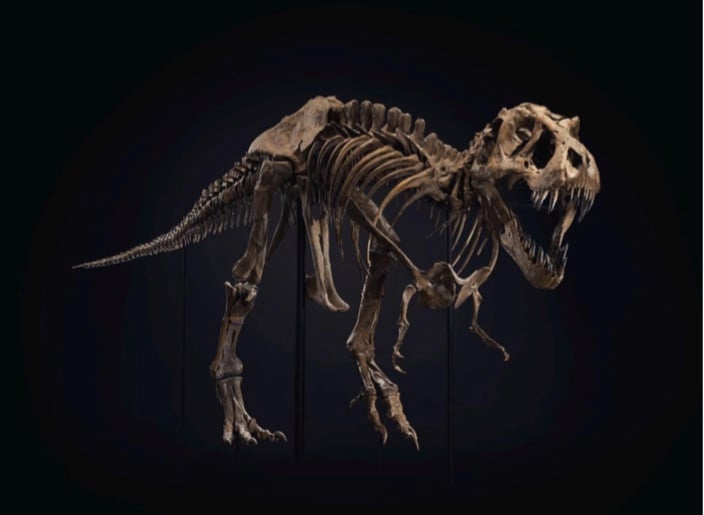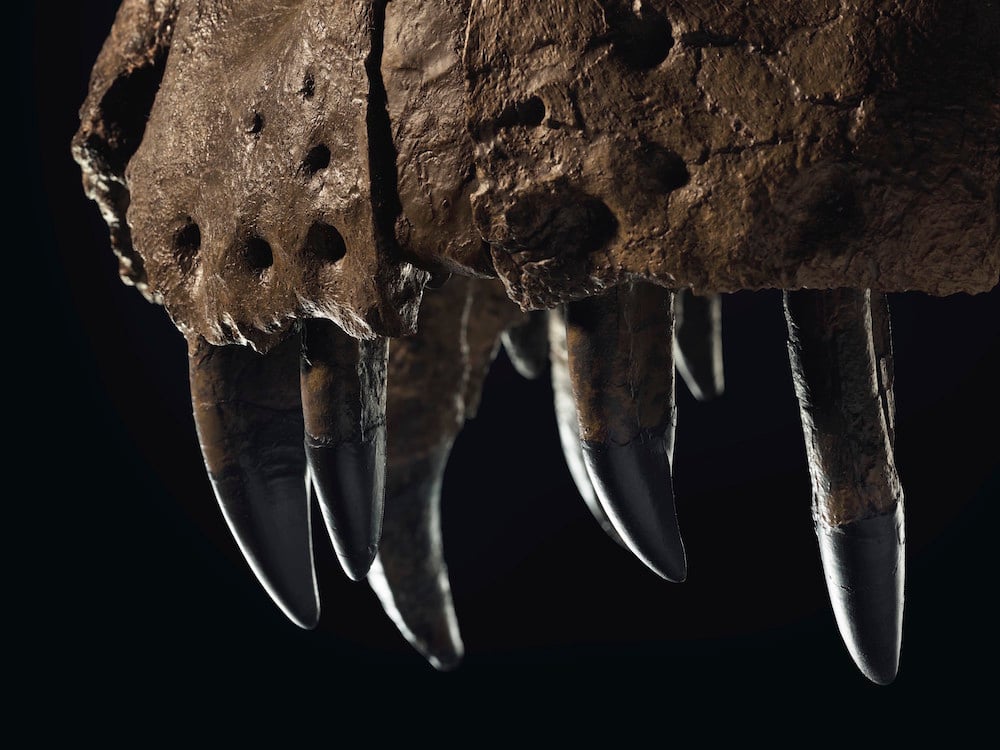Auctions
The King of the New York Auctions This Fall Isn’t Picasso or Pollock. It’s a T. Rex Named Stan—and His $8 Million Skeleton
The skeleton is expected to bring in as much as $8 million.

The skeleton is expected to bring in as much as $8 million.

Eileen Kinsella

Just when you thought the definition of “hybrid sale” couldn’t get any more expansive, Christie’s is throwing quite a curveball into its October 6 evening sale in New York. As part of its new mashup “20th/21st Century” week, the auction house will sell an eight-figure Picasso, an eight-figure Jackson Pollock—and one of the largest and most complete Tyrannosaurus rex skeletons ever discovered.
Named Stan in honor of Stan Sacrison, the paleontologist who first found the skeleton’s partially unearthed hip bones, the prehistoric creature is described as “an extraordinary surviving specimen from approximately 67 million years ago.” It stands 13 feet high and measures 40 feet long with the tail outstretched. It has 188 original bones and “eyes the size of baseballs.”
The presale estimate is $6 million to $8 million and there is no reserve, or minimum price. It was consigned by the Black Hills Institute of Geological Research in South Dakota as the result of a settlement agreement. (Christie’s did not elaborate on the settlement details.)
Among previous high prices for dinosaur bones was the $8.4 million Sotheby’s realized in a 1997 sale of a complete Tyrannosaurus Rex skeleton known as Sue, which is now in Chicago’s Field Museum.

Detail of ‘Stan’ a T-Rex skeleton being offered for sale by Christie’s. Image courtesy Christie’s.
For the past two decades, Stan has been displayed and studied at the Black Hills Institute in South Dakota. It has inspired dozens of academic articles and studies within the paleontological community.
Christie’s is pulling out all the stops for the dinosaur’s pre-auction display: it has blown out the wall that obstructs the view from its oversize windows on 49th Street so that the dinosaur will be viewable 24/7 from the sidewalk.
Beginning today and continuing through October 21, “enthusiasts and pedestrians alike” will have the chance to see the skeleton in a socially distanced setting. A limited number of in-gallery viewings will be available by appointment through Christie’s booking system and related educational content will be made available via QR codes.
Why place the Jurassic sensation in a fine art sale? Because evening sales are understood by collectors to be the best platforms for exceptional items, “and in this case, that includes this very important and very well-known T.rex skeleton,” said a Christie’s representative.
Auction followers may recall that this is not the first time Christie’s has placed an historic item alongside contemporary offerings. In late 2017, the auction house turned heads when it offered Leonardo da Vinci’s rediscovered portrait of Jesus, Salvator Mundi (circa 1500), which made auction history when it sold for more than $450 million on an estimate around $100 million, making it the most expensive object ever sold at auction.